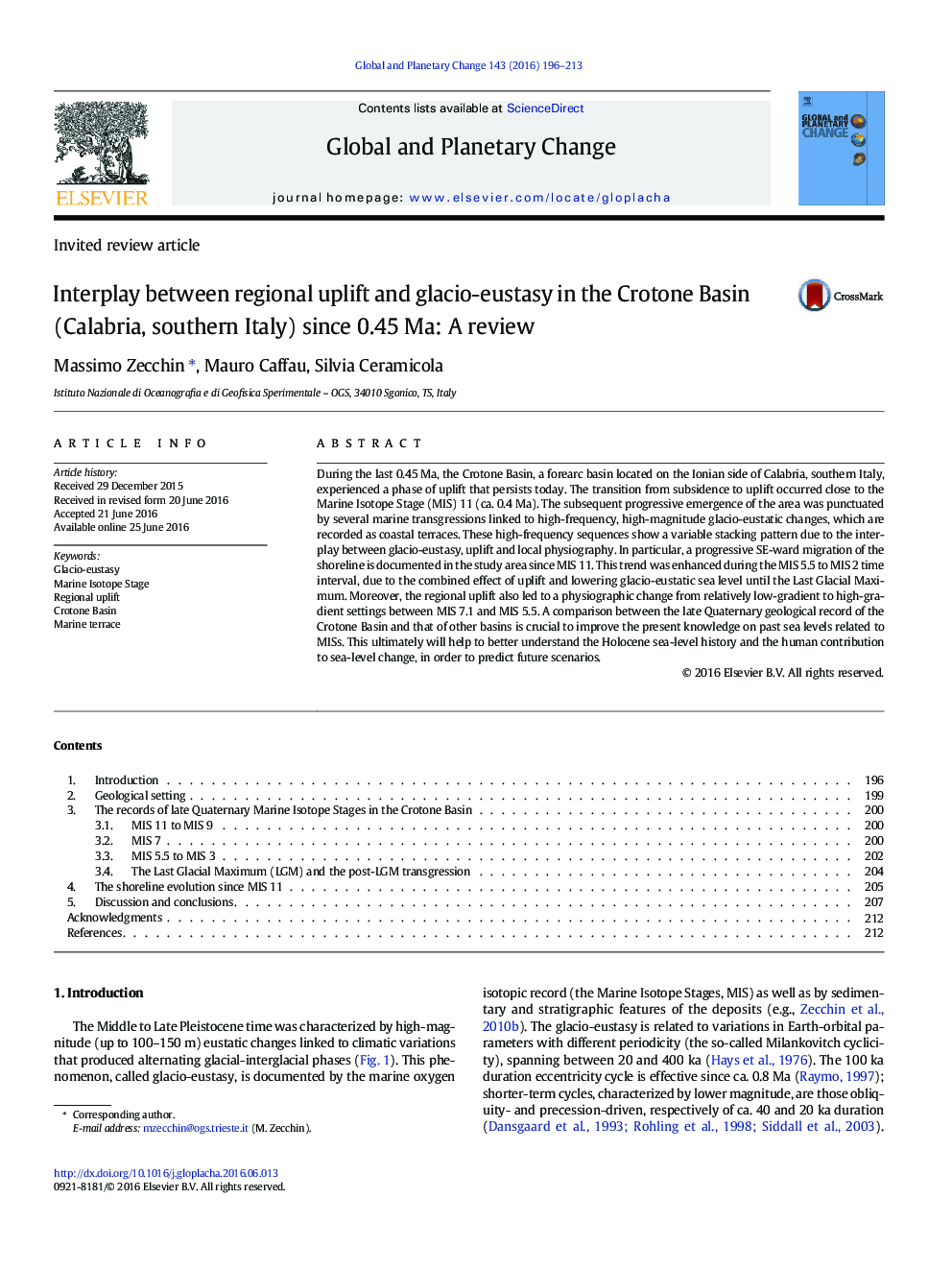| Article ID | Journal | Published Year | Pages | File Type |
|---|---|---|---|---|
| 4463303 | Global and Planetary Change | 2016 | 18 Pages |
•The depositional history of the Crotone Basin since the onset of its uplift is documented.•The palaeogeographic and physiographic evolution of the basin is illustrated.•The present results allow to better understand the late Quaternary glacio-eustatic changes.
During the last 0.45 Ma, the Crotone Basin, a forearc basin located on the Ionian side of Calabria, southern Italy, experienced a phase of uplift that persists today. The transition from subsidence to uplift occurred close to the Marine Isotope Stage (MIS) 11 (ca. 0.4 Ma). The subsequent progressive emergence of the area was punctuated by several marine transgressions linked to high-frequency, high-magnitude glacio-eustatic changes, which are recorded as coastal terraces. These high-frequency sequences show a variable stacking pattern due to the interplay between glacio-eustasy, uplift and local physiography. In particular, a progressive SE-ward migration of the shoreline is documented in the study area since MIS 11. This trend was enhanced during the MIS 5.5 to MIS 2 time interval, due to the combined effect of uplift and lowering glacio-eustatic sea level until the Last Glacial Maximum. Moreover, the regional uplift also led to a physiographic change from relatively low-gradient to high-gradient settings between MIS 7.1 and MIS 5.5. A comparison between the late Quaternary geological record of the Crotone Basin and that of other basins is crucial to improve the present knowledge on past sea levels related to MISs. This ultimately will help to better understand the Holocene sea-level history and the human contribution to sea-level change, in order to predict future scenarios.
